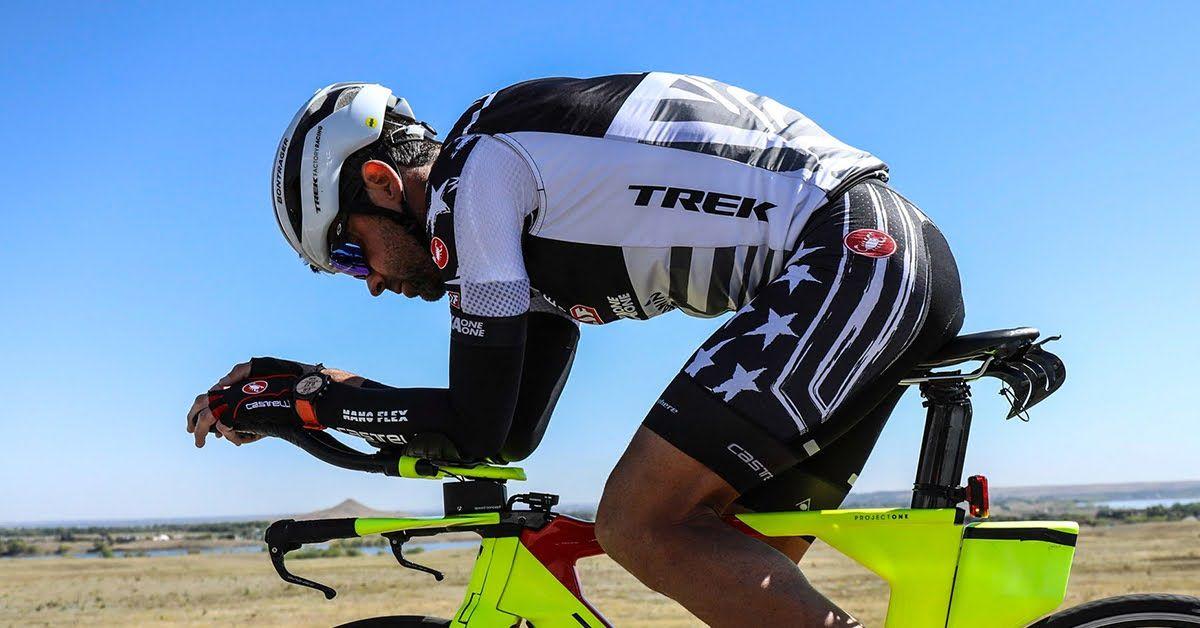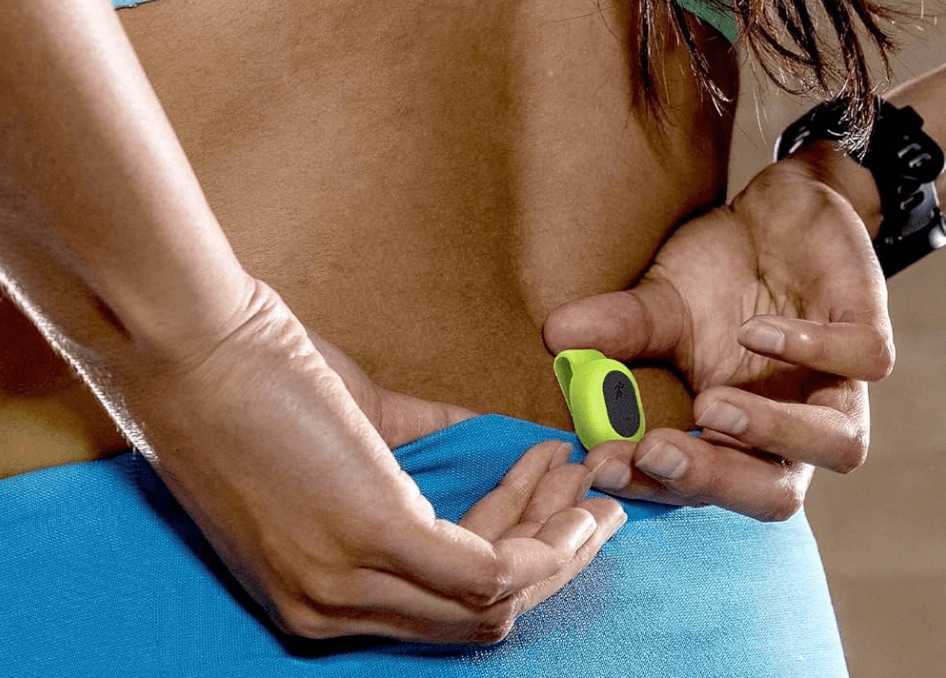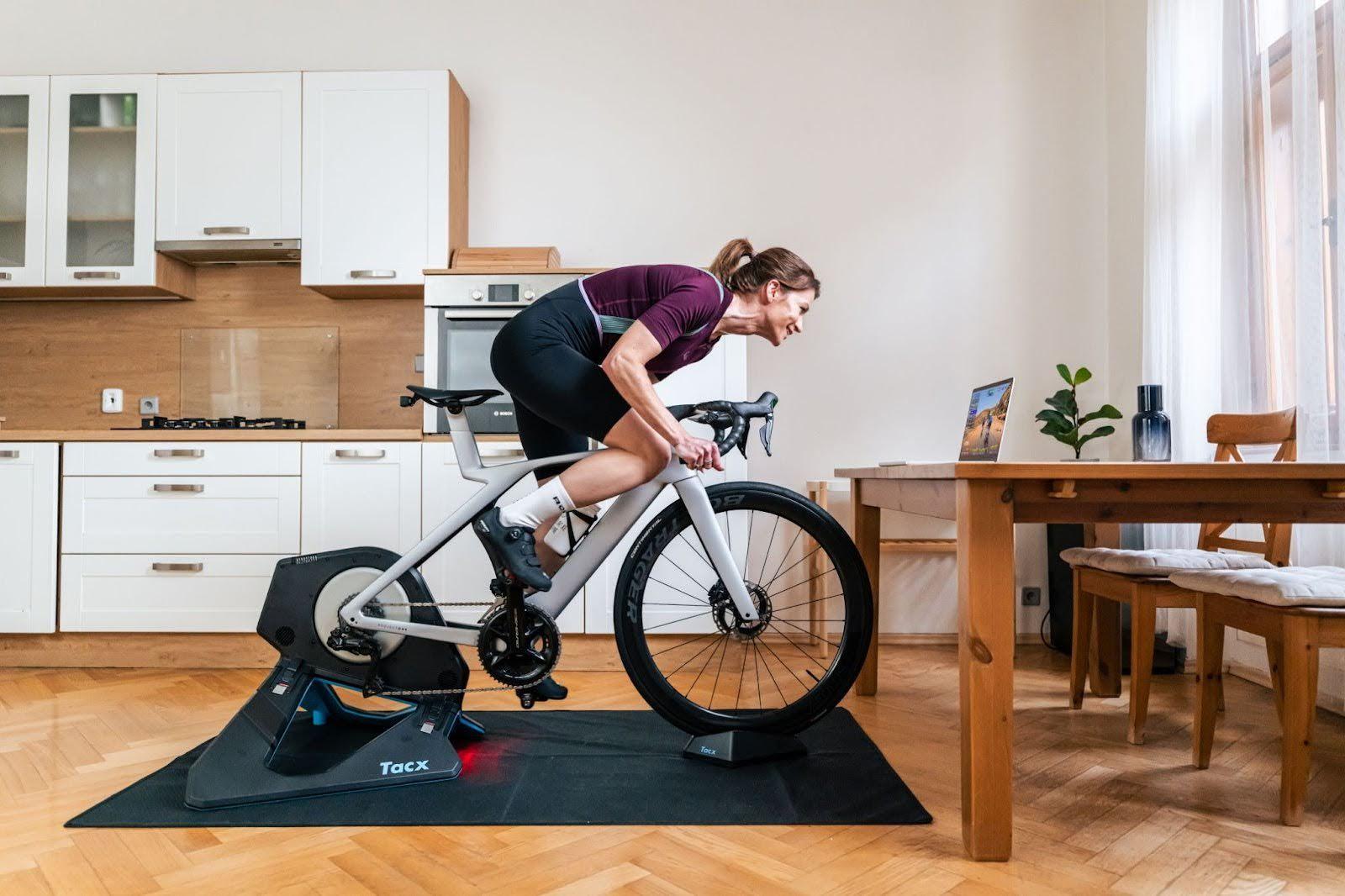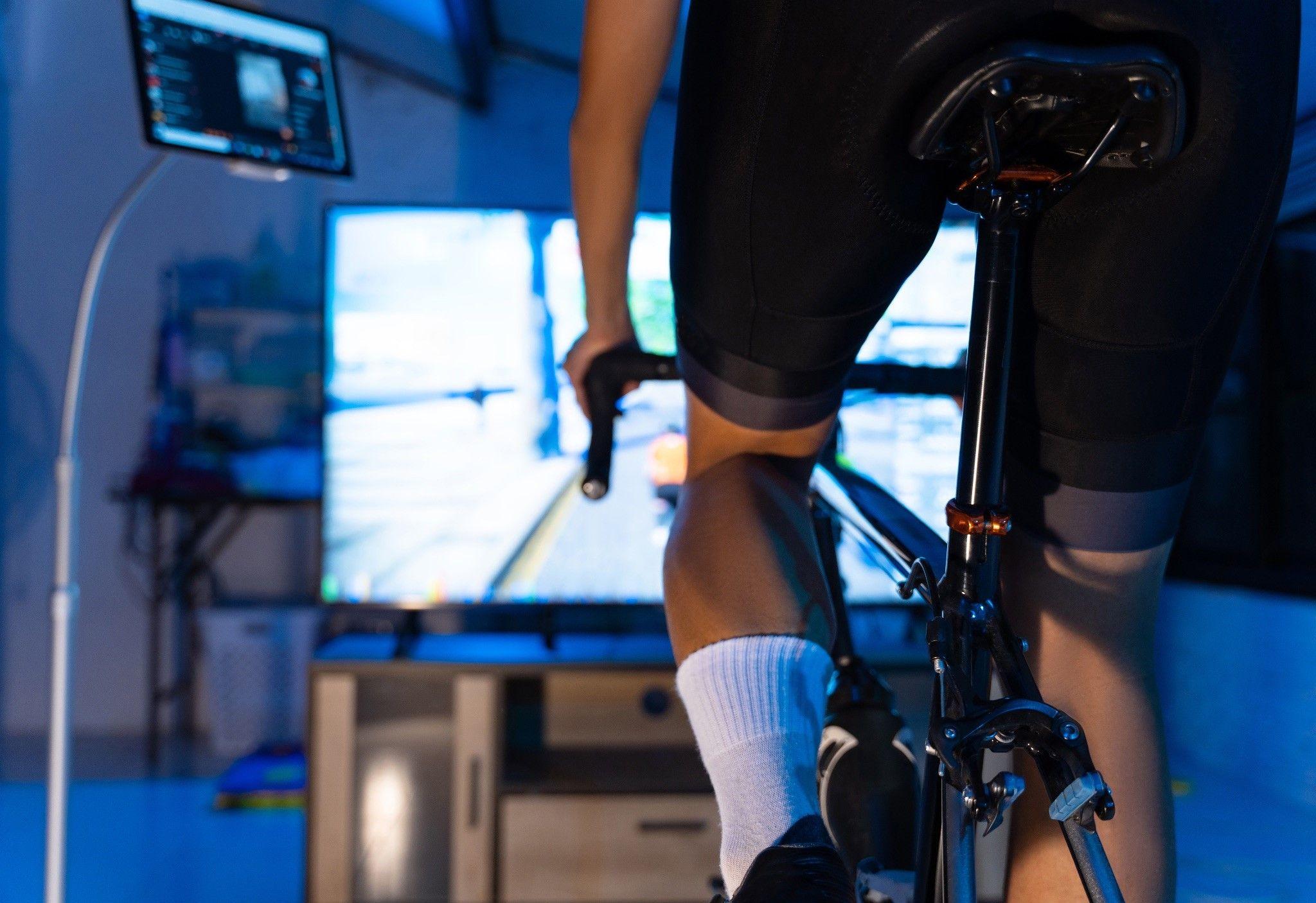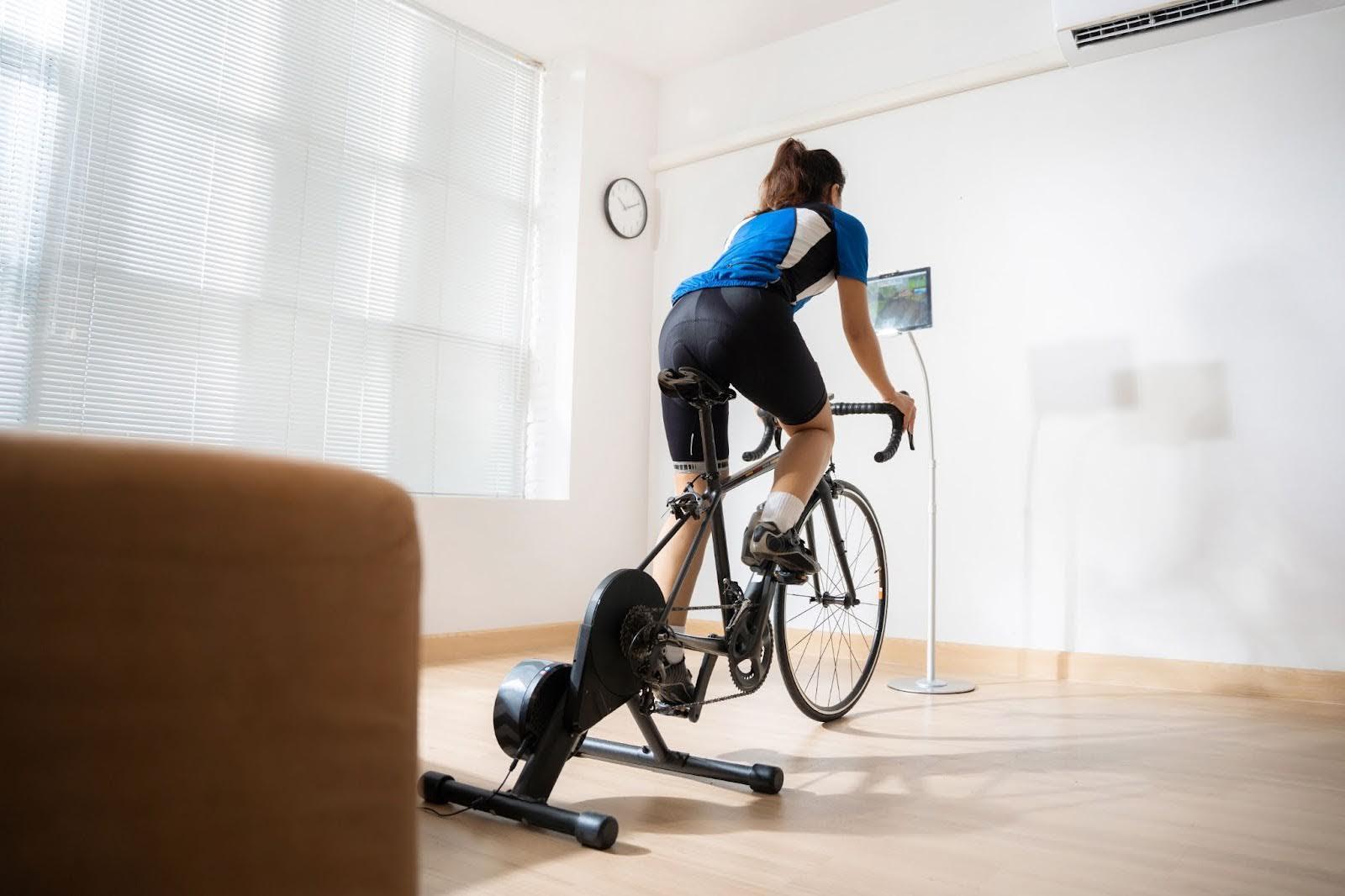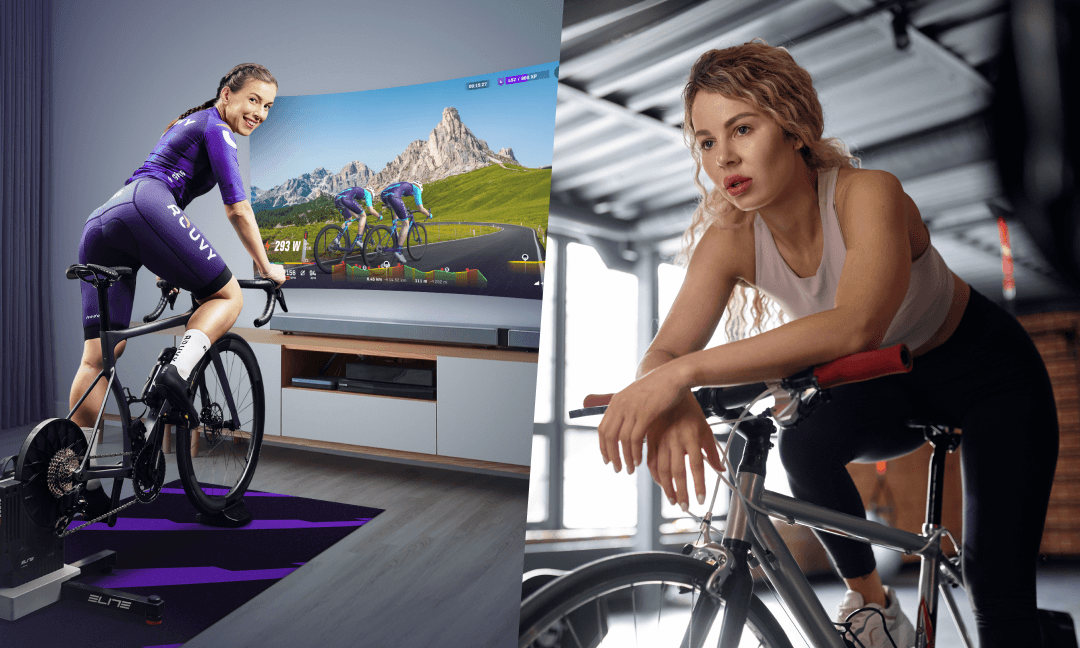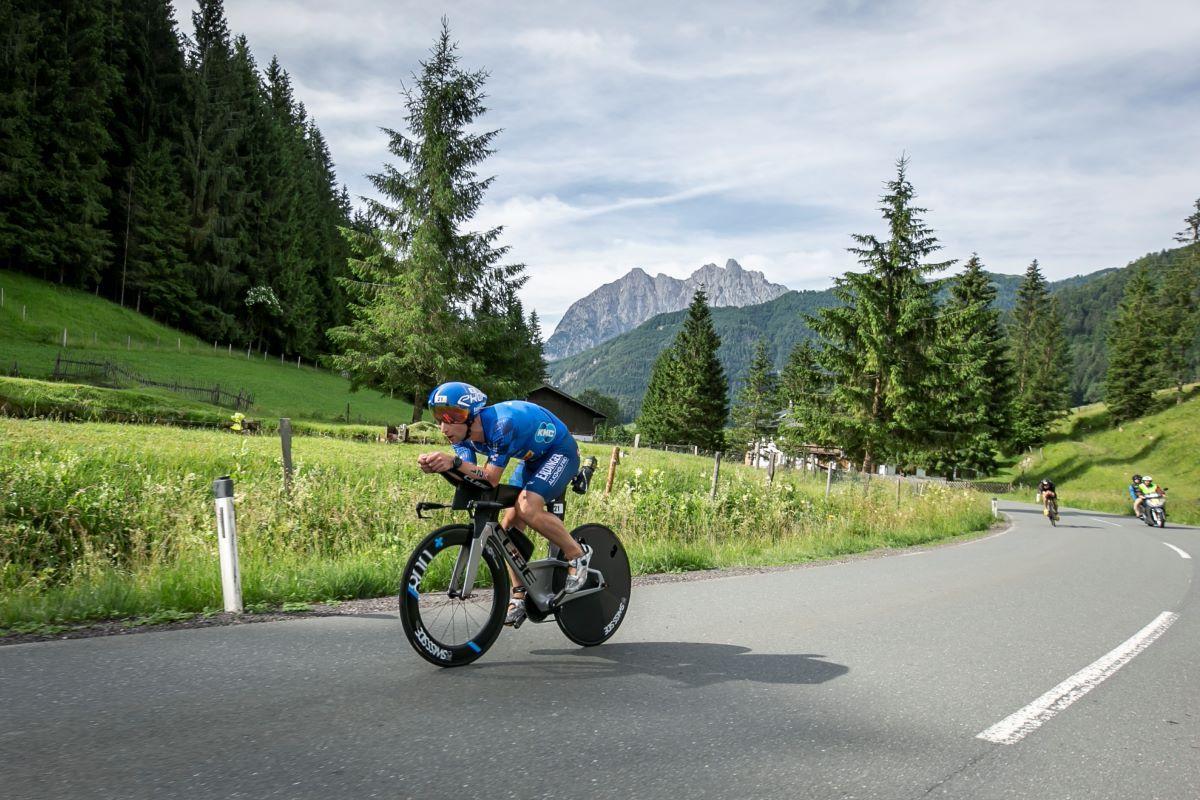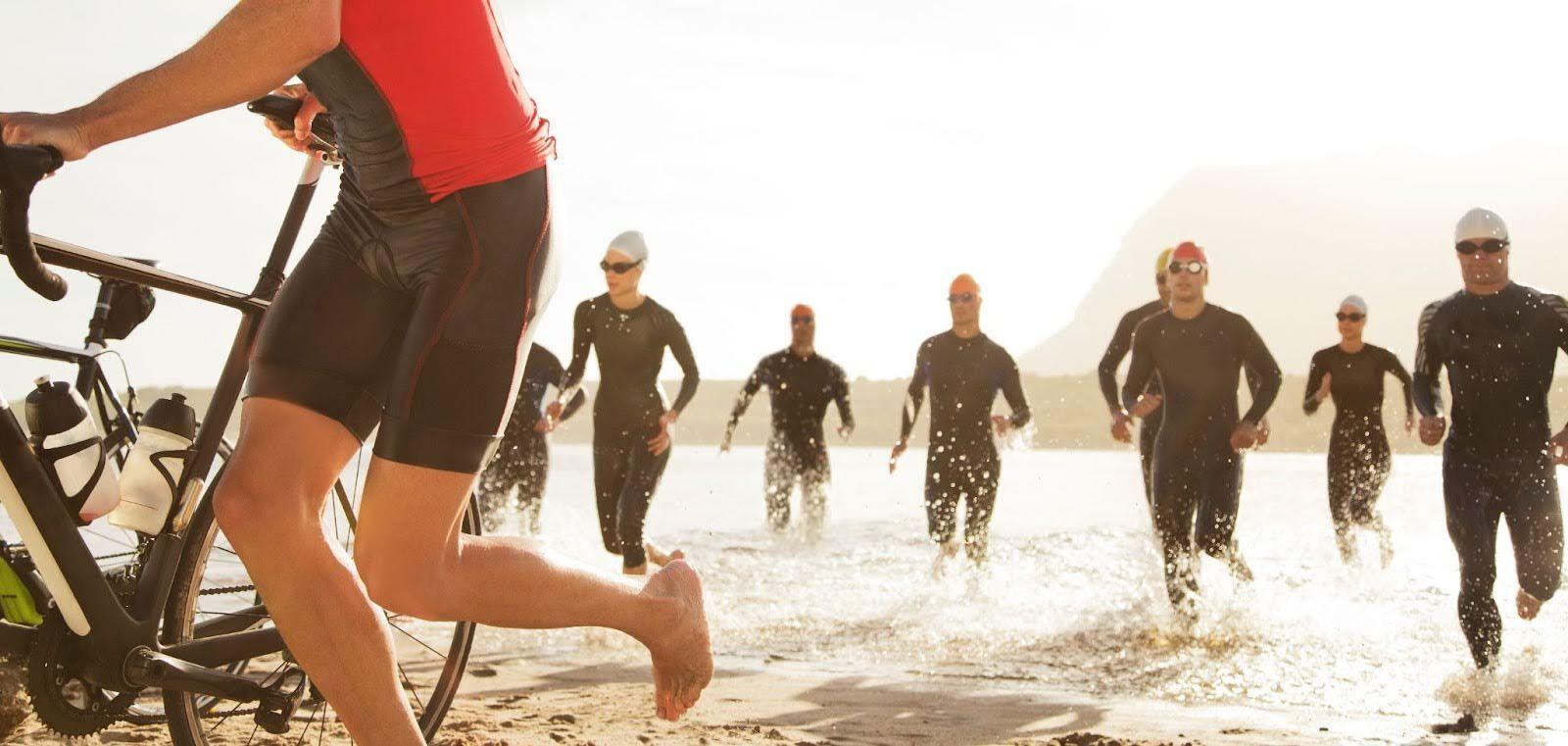
When you’re just starting out in triathlon, every second counts – and having reliable gear can make a big difference. You’re putting in serious time swimming, cycling and running, looking for those little gains each day. To get the most out of your workouts, you need tech you can trust – equipment that helps you track progress, measure intensity and see how you’re performing.
Garmin has become the go-to brand for triathletes because they make gear specifically for multisport athletes, so you can train smarter and more effectively. They’ve built a reputation among triathletes by focusing on what athletes need and continually upgrading their gear. From GPS watches that track every lap, step and pedal stroke to cycling computers that guide you through routes and break down your performance stats and heart-rate monitors that keep an eye on how your body’s doing – Garmin’s got everything you need to stay on top of your training.
Plus Garmin devices sync seamlessly with popular virtual training platforms like ROUVY. So whether you’re training indoors or out (or in the water) you can simulate race conditions, follow structured workouts and sync all your training data. It’s a simple way to get detailed insights into your workouts and dial in your training to reach your triathlon goals faster.

Garmin multisport watches
Garmin multisport watches are designed for triathletes, with precise performance tracking and insights during training and racing.
The Forerunner series is Garmin’s flagship. The Forerunner 965 stands out with its high-res AMOLED screen, long battery life (multiple days in GPS mode) and advanced performance metrics like Training Readiness, VO2 Max estimation and Real-Time Stamina. These advanced stats allow athletes to dial in their training intensity, manage fatigue and optimize recovery. In a review, Matt Kollat of T3 called the 965 “a premium option that does everything better than all other wearables on the market.”
Equally impressive, but for different tastes, the Forerunner 265S is a compact watch for athletes who want comfort and a lighter wear. Despite its smaller size the 265S is feature rich with full multisport tracking including GPS, heart rate and activity analysis. The 265S is popular among triathletes who want a reliable everyday watch that doesn’t compromise on features.
For athletes who want the most durability and feature set, the Garmin Fenix series, particularly the Fenix 8 is the ultimate performance watch. Built to withstand the harshest conditions, the Fenix 8 has specialized multisport profiles, open-water swim tracking and advanced physiological analytics so you get detailed performance feedback across all three triathlon disciplines.
Garmin bike computers
Garmin’s bike computers are a must have for triathletes looking to optimize their cycling training and racing. The Garmin Edge series has features tailored to both cyclists and multisport athletes.
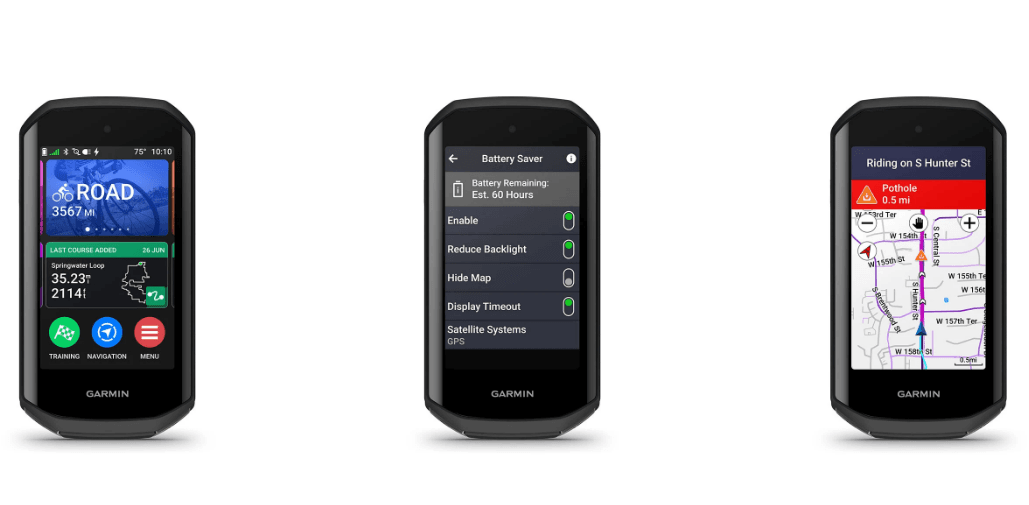
At the top end, the Garmin Edge 1050 has all the bells and whistles for performance tracking and navigation. The bright, high-res touchscreen is crystal clear showing maps, turn-by-turn navigation and loads of cycling metrics like power, cadence, speed and heart rate. Plus, advanced analytics like cycling dynamics, improved ClimbPro and real-time stamina insights so you can monitor your effort and manage energy throughout the whole ride.
Garmin’s Edge 1040 Solar has solar charging technology to extend battery life for long distance triathlon training. The touchscreen shows in-depth performance metrics, navigation and tools like Power Guide and stamina tracking. Accurate mapping, adaptive coaching prompts and multi-band GNSS mean you get guidance and seamless transitions from structured training to race-day precision.
If you’re looking for a simpler but still powerful option, the Garmin Edge 130 Plus is a compact and lightweight device that doesn’t sacrifice the essentials. Despite its small size, it has GPS tracking, breadcrumb navigation, climb tracking and all the performance metrics. It’s a great fit for triathletes who want a minimalist approach but still need data to track progress and optimize training.
Garmin bike computers integrate seamlessly with other Garmin devices and third-party platforms like ROUVY so you can transition between indoor virtual training and outdoor rides with consistency and precision in your training.
Garmin heart-rate monitors
Garmin heart-rate monitors give triathletes the insights they need to optimize their training and performance.
The top-of-the-line Garmin HRM-Pro Plus provides real-time heart-rate data across all three disciplines – swimming, cycling and running.
The HRM-Pro Plus not only measures heart rate but also tracks advanced running dynamics such as ground contact time, vertical oscillation and stride length, giving feedback to fine tune running form and efficiency.
The HRM-Pro Plus shines during swim training as well, storing heart-rate data underwater and then transmitting it to compatible Garmin watches as you exit the water. So no part of your triathlon session goes unrecorded. It’s comfortable to wear, durable and water resistant making it perfect for intense multisport training.
When paired with Garmin Connect and ROUVY, the HRM-Pro Plus is a key tool to monitor workout intensity, evaluate recovery and prevent overtraining. By providing detailed cardiovascular insights and syncing with other Garmin devices, it helps you train smarter.
Benefits of heart-rate monitoring
Heart-rate monitoring gives triathletes critical physiological insights to optimize training intensity and performance. Monitoring heart rate allows you to define and train in specific zones such as aerobic endurance, threshold and anaerobic zones and make targeted physiological adaptations. Training in these zones improves cardiovascular efficiency, increases endurance and overall race day performance.
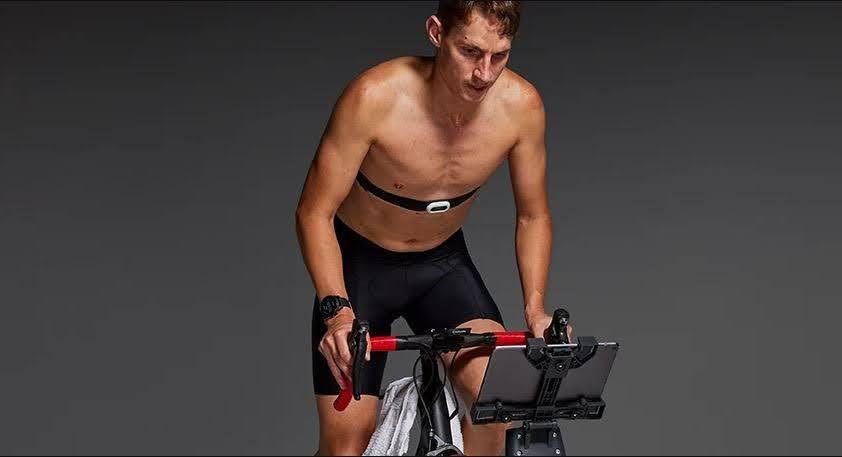
Heart-rate monitoring is also a key tool for pacing during races especially in longer endurance events like an IRONMAN where sustainability is key. You can avoid early fatigue by sticking to your predetermined heart-rate limits and maintaining steady performance throughout the event.
And heart-rate data is invaluable for tracking recovery. Elevated resting or training heart rate can indicate incomplete recovery, high stress or overtraining. Monitoring regularly allows you to manage your training load, incorporate rest periods and minimize the risk of injury or burnout.
Garmin’s heart-rate monitors like the HRM-Pro Plus take this to the next level by providing running dynamics and underwater heart rate during swimming sessions. This data allows for detailed physiological assessments and informed adjustments to your training program. Integrating heart-rate data gives you a holistic approach to training management and maximizes your athletic potential and sustainable performance over time.
Garmin power meters
Garmin’s Rally pedal series is perfect for triathletes looking to take their cycling training to the next level. The Garmin Rally RS200 pedals have dual-sensing technology, measuring left- and right-pedal power independently, giving you detailed info on cycling efficiency, pedal smoothness and balance. This dual-sided data is super useful for diagnosing and fixing imbalances, overall cycling efficiency and reducing injury risk.
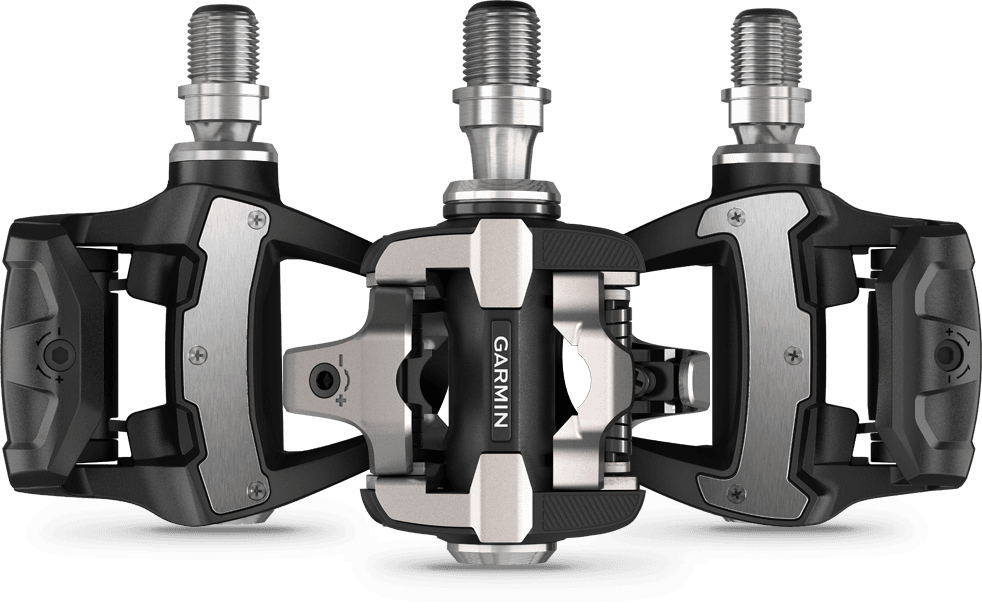
For triathletes who venture into off-road or mixed-terrain training the Garmin Rally XC200 pedals are built tough for demanding conditions. Like the RS200, the XC200 has dual-sensing power measurement, so you get accurate real-time data, no matter the terrain. At Cycling Weekly, Rachel Sokal called the XC200 “a hugely capable dual-sided pedal in the shape of a Shimano SPD body for off-road riding.
“Although expensive, pedal power meters can be a good investment,” Sokal wrote.
Power-meter data integration with Garmin Connect and ROUVY allows triathletes to analyse performance in full. This integration helps structure training sessions based on power zones, manage effort and recovery to maximize training efficiency and competition performance.
Why power data in triathlon
Power data is essential for triathletes to get precise insights into their cycling performance, and the structure and efficiency of their training. By using power meters like Garmin’s Rally pedals you can monitor your power output, measure performance objectively rather than relying on perceived exertion or heart rate. Accurate power measurement allows you to set realistic targets, measure improvements and make strategic changes to your training plan.
Training with power zones has many benefits, better energy management and pacing during races. Knowing your individual power thresholds allows you to pace yourself optimally, especially on long distance events where energy conservation is key. Power data also helps you identify your strengths and weaknesses, so you can target your training to fix any deficits and overall cycling efficiency.
Plus, power monitoring prevents overtraining by giving you clear indicators of accumulated fatigue and training stress. Triathletes can balance intense training sessions with recovery periods, reduce injury risk and avoid burnout. Power metrics also allow for precise interval training, so you can do targeted training to improve specific physiological systems, like aerobic capacity or muscular endurance.
Garmin Connect and ROUVY integration
Seamless connection between Garmin Connect and ROUVY – where training just gets a whole lot smarter for triathletes – comes down to one thing: simplifying data synchronization and giving you the analysis tools you need to improve. That means no more manual data entry (and the headaches that come with it). Your Garmin device uploads activities directly to ROUVY, so you can get to your performance metrics – power output, heart-rate data, cadence and pace – right away.
With structured training, you can monitor your progress and stick to your workout plans. That data feeds directly into ROUVY's robust analytics system, giving you a clear picture of your strengths, weaknesses and overall fitness trajectory. What that clarity gives you is the ability to tailor your cycling training sessions precisely, align your efforts with your objectives – and make real improvements.
One of the biggest benefits of this integration is how it brings consistency to your indoor and outdoor training environments. You can ride real-world routes indoors, using Garmin's precise data-recording capabilities to replicate the exact conditions and intensities you'll face in a race. That means you can prepare for a specific course, get to know the terrain and demands you'll face during a competition.
By linking Garmin Connect and ROUVY, you get an advanced, cohesive training ecosystem that lets you train smarter, track your progress accurately and reach your competitive goals more efficiently.
